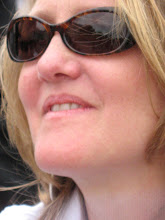The Château de Saint-Cloud dates back to 1572. Until the 18th century, it was largely the country palace of the cadet branch of the royal family (i.e. the descendents of the younger brothers to the king). Louis XIV’s younger brother, Philippe duc d’Orléans, made perhaps the biggest mark on the estate when he acquired it 1658: He hired the same landscape-designer to renovate the gardens – André Le Notre – who would undertake his brother’s Versailles masterpiece just three years later.
In 1785, four years before the outbreak of the French Revolution, the property became royal once again when King Louis XVI bought it from his cousin Louis-Philippe, duc d'Orléans. It was an extravagant expenditure at a time when French peasants were starving and the royal coffers were running dry. But the future King of France, young Louis-Joseph-Xavier-François, had been a sickly child and Queen Marie Antoinette was convinced that the air in St. Cloud would be healthier for him than that of Versailles. She, too, set about to upgrade the grounds, renovating the chateau and gardens with the help of Richard Mique who was just then adding the finishing touches to her Hameau (hamlet) at Versailles.
Alas, she and the children would never spend much time in St. Cloud. The future monarch died on 4 June 1789 and the Revolution broke out only weeks later. By October, the royal family was living under house arrest at the Tuileries Palace in Paris.
Following the Revolution, French governance fell for a short time to a corrupt arm called The Directory. In 1799, a coup d’état, aided by General Napoleon Bonaparte, overthrew the Directory. Guess where? That’s right, at the Château de St. Cloud!
Napoleon I climbed quickly from member of the tripartite Consul to Consul for Life to Emperor of France. The Château de St. Cloud became a favored home. Just as it would be preferred by Napoleon III, France’s second Emperor and Napoleon Bonaparte’s nephew.
Napoleon III declared war on Prussia from the Château de St. Cloud on 28 July 1870. Ironically, it was the same spot from which the Prussians laid siege to Paris in the torturous months that followed.
 As Parisians struggled to stay alive - feasting off cats and dogs and zoo animals once the meat of sheep, pigs, and cows ran out - the Prussians shelled them relentlessly from the elevated St. Cloud park grounds. On 13 October counter-fire from within the city hit the chateau. It caught fire and burned to the ground.
As Parisians struggled to stay alive - feasting off cats and dogs and zoo animals once the meat of sheep, pigs, and cows ran out - the Prussians shelled them relentlessly from the elevated St. Cloud park grounds. On 13 October counter-fire from within the city hit the chateau. It caught fire and burned to the ground.
Today, the domaine de St. Cloud is owned and maintained by the French state. Among the daily joggers, dog-walkers, sunbathers, and picknickers, one can still detect many remnants of its illustrious past. That is, if you know what to look for:
- Outbuildings and a small museum near the chateau ruins provide clues to the estate’s 16th century beginnings;
- Le Nôtre’s high-baroque cascade is one of ten fountains dating to his 17th century renovations;
- Marie Antoinette's 18th century flower garden today cultivates roses for exclusive use by the state;
- La Lanterne, so named because a lantern was lit there whenever Napoléon I was in residence, remains a favorite viewpoint of Paris among visitors;
- An English garden, the Jardin de Trocadero, has been blooming at St. Cloud since its planting in the 1820s, during France’s short-lived attempt to restore the Bourbon Monarchy.
*****
And now the lazy days of August are over. The sand of Paris Plage has been swept away and the Seine expressway hums with vehicles carrying passengers back to work. The leaves are turning brown and beginning to blanket the Allée of the Ile des Cygnes. Yesterday, sun-kissed vacationers faced hours of stressful traffic delays along the nation's auto-routes as they fought their way home for La Rentrée (The Return). Time to join the queues to buy books and pens and paper again. Starting today for the next 11 months we'll have to share Paris, and all her sleepy corners, once again!
Images:
Chateau and fountain at St. Cloud, around 1845. Engraving by Chamouin after a daguerrotype, courtesy of Wikimedia Commons.
Adolphe Braun (1811-1877), "Ruines du chateau de St. Cloud", Paris, 1871, courtesy of Wikimedia Commons.





.jpg)

